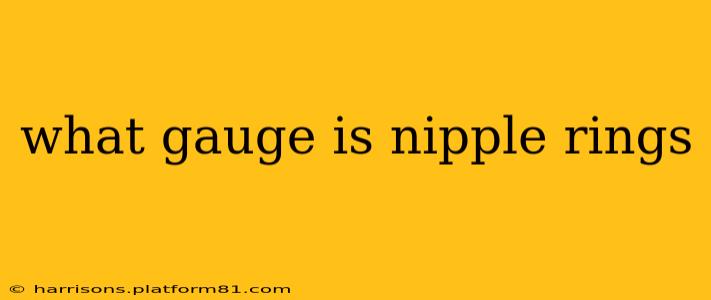What Gauge is Nipple Rings?
The gauge of a nipple ring refers to its thickness, and the most common gauges for nipple piercings are 14 gauge and 16 gauge. While other gauges can be used, these are the most frequently recommended by piercers for several reasons. Let's delve into the details.
What gauge is most commonly used for nipple piercings?
The most popular gauge for nipple piercings is 14 gauge (1.6mm). This gauge offers a good balance between being substantial enough to hold jewelry securely and being comfortable for everyday wear. Many piercers prefer this gauge as it provides enough room for a variety of jewelry styles while minimizing the risk of rejection or migration.
Are 16 gauge nipple rings common?
Yes, 16 gauge (1.2mm) is also a common gauge for nipple piercings, particularly for those with thinner nipples or those who prefer a daintier look. While smaller, it still offers a secure fit for many piercing styles. However, it may be slightly more prone to rejection or migration, so it's important to choose the correct size with the guidance of a professional piercer.
What are other gauges used for nipple rings?
While less common, you might encounter nipple rings in other gauges, such as 12 gauge (2mm) or even 18 gauge (1mm). 12 gauge is considered quite thick and might be more suitable for individuals with larger nipples or those who prefer a bolder look. However, it's less common due to potential discomfort and increased risk of complications. 18 gauge, on the other hand, is very thin and generally not recommended for initial piercings as it can be more prone to rejection.
What gauge should I choose for my nipple piercing?
The ideal gauge for your nipple piercing is a highly personal decision that should be made in consultation with a reputable and experienced piercer. Factors to consider include:
- Nipple size and thickness: A piercer will assess your anatomy to determine the most suitable gauge for your individual needs.
- Personal preference: While the piercer will offer guidance, ultimately, the choice rests with you.
- Jewelry type: Certain jewelry designs may be better suited to specific gauges.
What happens if I choose the wrong gauge?
Choosing an incorrect gauge can lead to several issues, including:
- Rejection: The body may push out the piercing if the jewelry is too small or too large.
- Migration: The piercing may shift its position over time.
- Irritation and infection: An ill-fitting piercing increases the risk of infection and irritation.
- Pain and discomfort: An unsuitable gauge can cause unnecessary pain and discomfort.
In conclusion: While 14 gauge and 16 gauge are the most common and generally recommended gauges for nipple piercings, your piercer will ultimately determine the best size for your anatomy and preferences. Always prioritize a professional piercing experience for safe and successful results. Never attempt to self-pierce, as this can result in serious complications.
